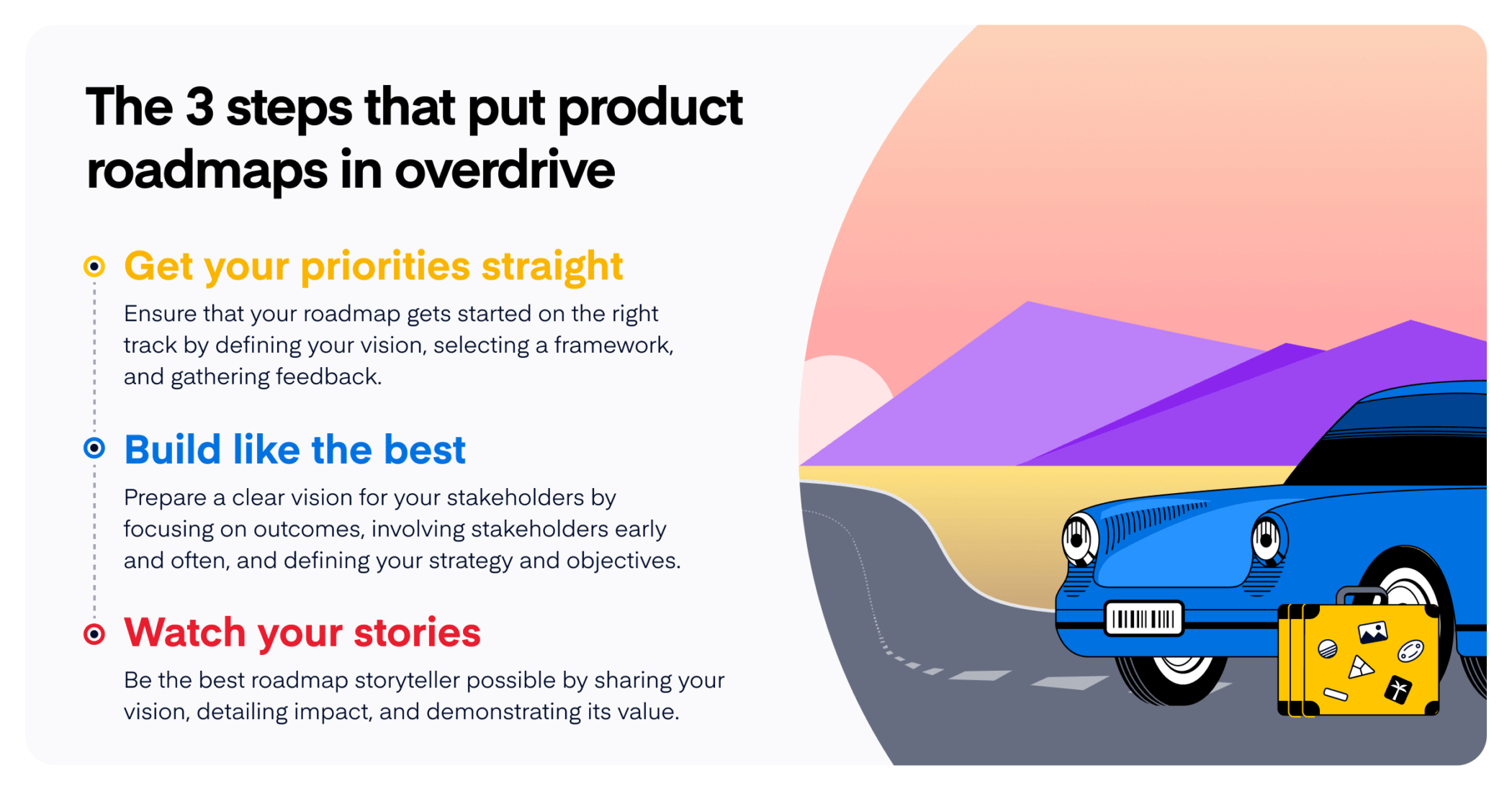Infographic: 3 steps that put product roadmaps in overdrive

Roadmaps can be full of unintended pitfalls, like overly ambitious timelines or too many unnecessary features that don’t actually solve the needs of your customers. How do you stay the course to build features your customers actually want, instead of getting pulled down another dusty side road someone in the C-Suite swears is a shortcut?
We put together insights from several product management road warriors to keep you cruising toward Product Excellence.
1. Get your priorities straight
Ensure that your roadmap gets started on the right track by first and foremost defining your vision. This step is critical because it will serve as a foundation for future cross-functional communications. Be sure to incorporate stakeholder feedback, prepare supporting data, and keep progress transparent along the way.
One way to do this is to select a framework to communicate with; prioritization frameworks such as ICE and RICE can help you and your team confirm hypotheses and stay accountable to your product vision when used properly.
You also want to be sure you’re gathering feedback. Diverse views can create better products — create a source of truth to collect, analyze and integrate feedback in order to make every voice heard throughout the prioritization process.
2. Build like the best
You want to prepare a clear vision for your internal and external product stakeholders — think leaders and customers, respectively. Start by focusing on outcomes, not just outputs. It can be detrimental to the success of your company to get caught up in speedy outputs, like lots of features your customers never use, instead of focusing on the features that incorporate the outcomes both you and your customers want to see.
Be sure during this process you’re keeping stakeholders in mind, involving them early and often. Product roadmap visibility — in its many synchronous and asynchronous forms — helps reduce miscommunications, identify barriers to launch, and keep everyone involved and engaged well before the development process begins.
Finally, to truly build like the best, you need to define your strategy and objectives. Just because a feature is extremely sought-after doesn’t mean it aligns well with company goals and objectives, particularly long-term. It’s important to weigh the risks and benefits of investing in short-term needs that may ultimately have to be sidelined in favor of business-critical initiatives.
3. Watch your stories
We don’t mean on the television with your grandma; we want you to be the best roadmap storyteller possible. How? Share your vision! Tell the story of your product roadmap and the process that will define your path to launch, which opens you up to valuable feedback and insights that may have been overlooked.
Remember that details have impact and make it your most important job to combine disparate sources of information into a cohesive roadmap — and also remember that knowledge cannot be yours alone. Share the data that brings your vision to life and win the support of your cross-functional teams that will be responsible for helping you realize it.
And once you’ve explained the importance to your company, demonstrate its value to customers. A one-liner on the value of features along your roadmap will convey that information with confidence.

We hope this helps give you the roadmap of your team’s dreams, World’s Largest Ball of Twine not included (unless your customers won’t stop asking for it).




![The CPO’s Blueprint for Annual Planning: An Opportunity to Drive Change [Part 3]](https://www.productboard.com/wp-content/uploads/2024/11/strategy-blueprint-560x293.png)
